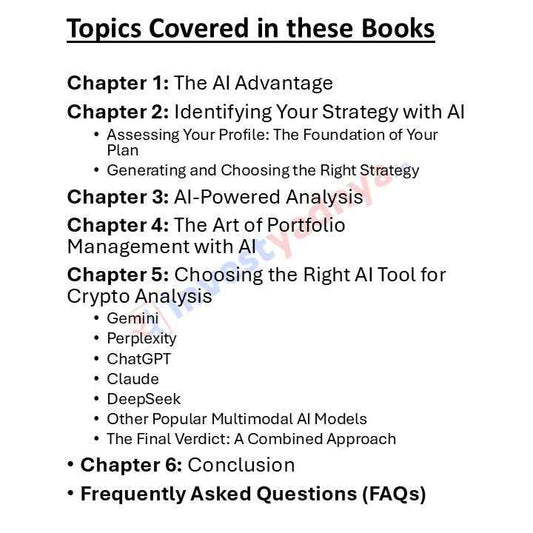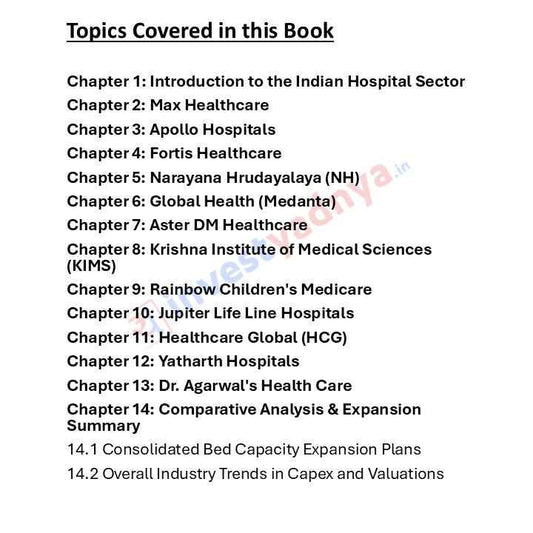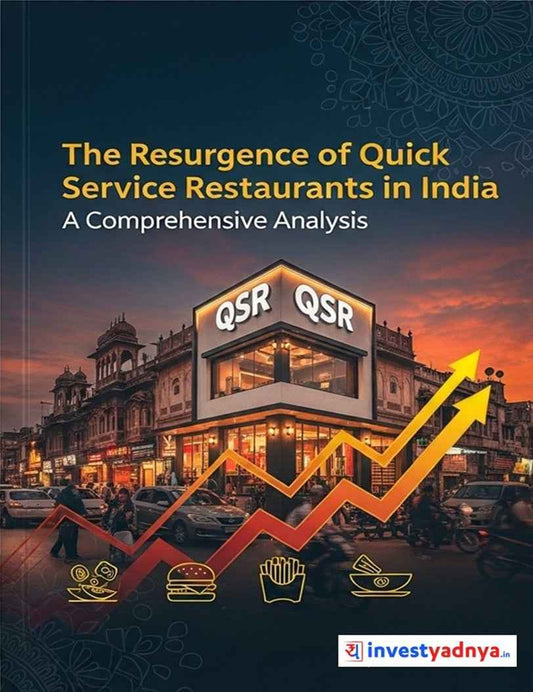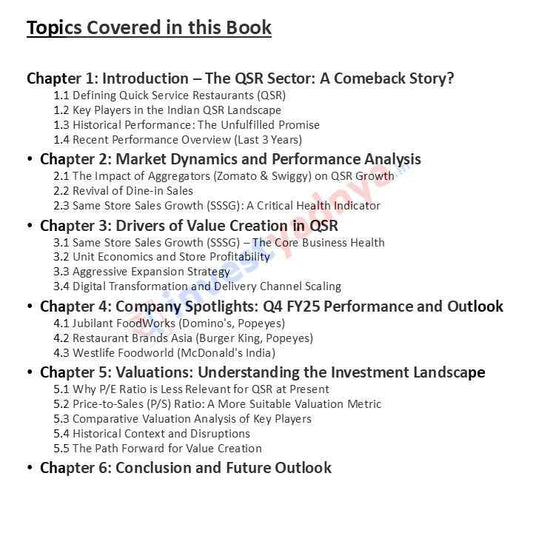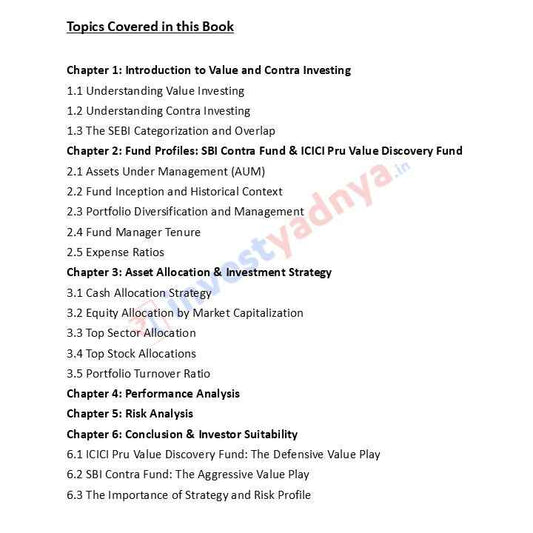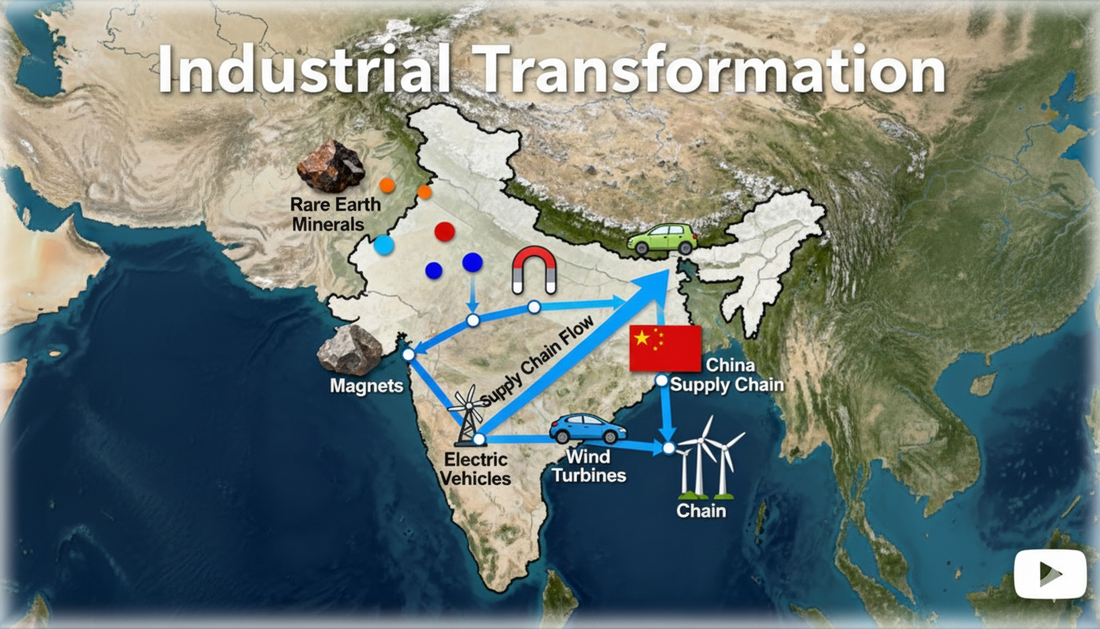
China's Export Curbs Could Redraw India's Manufacturing Map
The Export Restrictions Unveiled
On October 9, 2025, China announced sweeping export controls that dramatically expand Beijing's leverage over the global rare earth supply chain. The restrictions, taking effect in two phases—November 8 and December 1, 2025—represent the strictest rare earth controls implemented to date. The measures cover twelve rare earth elements including holmium, erbium, thulium, europium, ytterbium, samarium, gadolinium, terbium, dysprosium, lutetium, scandium, and yttrium.
What makes these restrictions particularly far-reaching is the 0.1% threshold rule. Any product containing even trace amounts of Chinese-sourced rare earths now requires government approval for export. This brings thousands of automotive components, electronics parts, and defense equipment under Chinese regulatory scrutiny. The rules also ban exports of rare earth extraction, smelting, processing, and magnet manufacturing technologies, effectively preventing countries from replicating China's capabilities.
India's Precarious Dependency
India's vulnerability to these export curbs is stark and alarming. The country imports over 85% of its rare earth requirements from China, with magnet imports reaching particularly critical levels. In fiscal year 2024-25, India imported approximately 53,700-57,000 tonnes of rare earth magnets, with a staggering 93% originating from China. This represents an 88% surge compared to the previous year, underscoring the deepening dependency even as geopolitical tensions mounted.

The import statistics paint a sobering picture. In FY 2023-24 alone, India imported 1,185 tonnes of rare earth metals, with 699 tonnes (59%) sourced from China. When including Hong Kong—which effectively channels Chinese exports—the dependency rises even higher. Despite possessing domestic reserves estimated at 6% of global stocks, India has failed to develop adequate processing and refining capabilities, leaving it captive to Chinese supply chains.
Current stockpiles across Indian industries are estimated to last merely 2-3 weeks, creating an immediate crisis for manufacturers. Industry executives have reportedly planned emergency trips to China to secure shipments, while automotive bodies have urged government intervention to prevent production shutdowns.
Sectoral Impact: Who Gets Hit Hardest
Electric Vehicles and Automotive Industry
The automotive sector faces the most immediate and severe impact. Rare earth permanent magnets are indispensable for EV traction motors, power steering systems, sensors, and advanced driver assistance systems (ADAS). Each electric vehicle requires 1-2 kilograms of rare earth magnets, with neodymium-iron-boron (NdFeB) magnets being the preferred choice due to their exceptional power-to-weight ratio.
Companies like Tata Motors, Mahindra & Mahindra, and suppliers to Maruti Suzuki will face margin pressure as input costs rise. The situation is particularly acute for India's ambitious EV transition plans. With the government targeting 30% EV penetration by 2030, any disruption in magnet supplies could derail these goals and force manufacturers to consider less efficient alternatives.
Auto ancillary companies producing electric motors, actuators, and sensors are equally vulnerable. Over 50 import applications for heavy rare earth magnets have reportedly been stuck in Chinese regulatory processes since April 2025, leaving manufacturers in limbo.

Defense and Aerospace
India's defense manufacturing faces critical vulnerabilities that extend beyond economics into national security territory. Rare earth elements are integral to precision-guided missiles, radar systems, communication equipment, unmanned aerial vehicles (drones), and smart munitions. F-35 fighter jets, for instance, require substantial quantities of rare earth materials, as do Tomahawk missiles and advanced targeting systems.
The defense sector's dependency on Chinese rare earths and precision magnets creates strategic risks that compromise India's Atmanirbhar Bharat (self-reliant India) defense initiatives. Programs involving indigenous missile development, next-generation aircraft, and naval systems all depend on components containing rare earth elements. Any supply disruption could delay critical defense acquisitions and force India to source alternatives at premium prices from limited suppliers.
Renewable Energy and Wind Power
The renewable energy sector, particularly wind power, represents another critical vulnerability. Large wind turbines using direct-drive technology require approximately 600-1,000 kg of NdFeB magnets per megawatt of capacity. Each turbine essentially contains half a ton to nearly a full ton of rare earth magnets—roughly equivalent to the weight of a grand piano.
India's ambitious renewable energy targets—450 GW by 2030—depend heavily on wind capacity expansion. With each large wind installation project requiring multiple tonnes of rare earth magnets, cost inflation in this sector could significantly impact the economics of clean energy. Developers may be forced to shift toward doubly-fed induction generators (DFIG) that use fewer rare earths but offer slightly lower efficiency, potentially affecting overall project viability.
Consumer Electronics and Technology
While perhaps less critical than defense or EVs, India's growing electronics manufacturing sector also faces challenges. Rare earth magnets are essential for smartphone vibration motors, hard disk drives, speakers, camera autofocus systems, and various sensors. As India positions itself as a global electronics manufacturing hub under production-linked incentive schemes, any disruption in rare earth supplies could undermine these ambitions.
The Global Context: China's Monopoly
China's dominance over the rare earth value chain is comprehensive and virtually unassailable in the short term. The country controls approximately 60-70% of global rare earth mining, but more critically, commands 85-90% of refining and processing capacity. This downstream dominance is what gives Beijing its leverage—even countries with domestic rare earth deposits often ship their ores to China for processing.
The global rare earth magnet market is valued at approximately $19-25 billion, with China producing over 80% of the world's permanent magnets. Chinese magnet exports to the United States alone experienced 660% volatility following earlier trade negotiations in 2025, demonstrating Beijing's willingness to weaponize this dependency.
The strategic timing of these latest restrictions is noteworthy. They were announced just three weeks before President Donald Trump's planned meeting with Chinese President Xi Jinping at the Asia-Pacific Economic Cooperation (APEC) summit, signaling China's intent to use rare earths as negotiating leverage in broader trade discussions.
Near-Term Challenges: Margin Pressure and Supply Disruptions
The immediate future presents significant challenges for Indian manufacturers across multiple sectors. Margin compression will be the first visible impact as companies absorb higher input costs or attempt to pass them on to customers in price-sensitive markets. For automakers operating on thin margins, even a 10-15% increase in motor costs could significantly impact profitability.
Production disruptions represent an even more serious threat. With stockpiles lasting only weeks, any delay in Chinese export licenses could force assembly line shutdowns. Ford's Chicago plant halt due to magnet shortages earlier in 2025 serves as a cautionary example of how quickly supply chain vulnerabilities can materialize into operational crises.
Project delays in renewable energy and infrastructure could cascade through the economy. Wind energy projects with committed timelines may face cost overruns or postponements, affecting India's climate commitments and energy security goals.
Stock market impacts are already being anticipated, with analysts flagging potential downside risks for EV manufacturers, auto ancillary companies, defense contractors, and renewable energy developers. Conversely, companies positioned in domestic rare earth mining and processing could see valuation premiums as investors bet on supply chain localization.
Long-Term Opportunity: The Make-in-India Catalyst
While the near-term outlook appears challenging, these export restrictions could ultimately prove transformative for India's industrial self-reliance. The crisis creates urgent political and economic imperatives to develop domestic capabilities that have been delayed for decades despite possessing adequate resources.
India's Rare Earth Potential
India holds approximately 6% of global rare earth reserves, estimated at 11.93 million tonnes with 55-65% rare earth oxide content. The country has established presence in mineral sands and rare earth extraction through IREL (India) Limited, the sole public sector undertaking in this space. However, India has historically exported rare earth concentrates for processing elsewhere, capturing minimal value from its domestic resources.
Policy Response: The ₹7,300 Crore Initiative
The Indian government has responded with a comprehensive ₹7,300 crore (approximately $870 million) scheme to develop domestic rare earth magnet production capabilities. This seven-year initiative, aligned with the National Critical Mineral Mission, aims to establish an annual production capacity of approximately 6,000 metric tonnes by 2030.
The scheme offers production-linked incentives to at least five companies willing to invest across the entire value chain—from raw material processing to finished magnet manufacturing. This represents a significant policy evolution from earlier approaches that focused only on mining.
Critically, IREL has been instructed to halt exports of neodymium and prioritize domestic supply, reversing years of export-oriented policy. This shift acknowledges that raw material exports provide minimal strategic value when the country lacks downstream processing capabilities.
Key Beneficiaries: Companies to Watch
Several Indian companies are positioned to benefit from the localization push:
IREL (India) Limited: As the primary public sector player, IREL will likely receive substantial government support to expand neodymium production and develop separation technologies.
Vedanta Group: This diversified mining conglomerate has announced intentions to enter rare earth extraction and processing, leveraging its existing metallurgical expertise.
NALCO (National Aluminium Company Limited): With aluminum refining capabilities, NALCO is exploring rare earth processing as a natural adjacent business.
Gujarat Mineral Development Corporation (GMDC): This state enterprise is establishing rare earth extraction capabilities to support Gujarat's industrial base.
PolyProtic Chemical India Limited: Focused on R&D-led solutions for rare earth metal extraction and battery recycling, this company represents the emerging private sector presence in critical mineral processing.
Technology and Capability Development
The real challenge lies not in mining but in developing separation, refining, and magnet manufacturing technologies. China's 40-year head start in optimizing these processes creates formidable barriers. Rare earth separation is chemically complex, requiring specialized expertise in hydrometallurgy and extensive environmental management capabilities.
Magnet manufacturing presents additional hurdles. NdFeB magnet production requires precise control over composition, sintering processes, and surface treatments to achieve desired magnetic properties. India will need to either develop indigenous technologies, acquire licenses from international players (primarily Japanese and South Korean companies), or attract foreign direct investment in this sector.
Regional Diversification and International Partnerships
India is simultaneously pursuing international partnerships to reduce Chinese dependency. The country has engaged with Australia's Lynas Corporation, which supplies Japan with rare earths, exploring similar arrangements. Partnerships with African nations possessing rare earth deposits are also being discussed as part of India's broader critical mineral diplomacy.
The India-Japan agreement involving IREL and Toyota Tsusho Corporation, while currently focused on exports to Japan, could evolve into a model for technology transfer and joint manufacturing. However, the Indian government's recent directive to IREL to prioritize domestic supply over exports signals that such arrangements may be reconsidered in the current geopolitical climate.
Strategic Implications: Rewriting the Manufacturing Map
China's export restrictions could fundamentally alter India's industrial geography and capabilities. The crisis creates conditions for what economists call "import substitution industrialization"—where external supply constraints force domestic capacity development.
Decentralization of Manufacturing
As rare earth processing facilities develop, they could catalyze regional industrial clusters. States with rare earth deposits—particularly Odisha, Andhra Pradesh, Tamil Nadu, and Madhya Pradesh—may emerge as new manufacturing hubs for magnets and downstream applications.
Technology Ecosystem Development
Developing rare earth capabilities requires building an entire ecosystem of specialized equipment manufacturers, chemical suppliers, testing facilities, and skilled workforce. This could spur broader advances in materials science, metallurgy, and precision engineering that benefit multiple industries.
Defense-Industrial Base Strengthening
Successfully localizing rare earth processing would significantly enhance India's defense-industrial autonomy. Indigenous missile programs, radar systems, and advanced electronics could rely on secured domestic supply chains rather than geopolitically vulnerable imports.
Green Energy Transition Resilience
A domestic rare earth magnet industry would make India's renewable energy targets more achievable and less vulnerable to external disruptions. This is particularly critical as global competition for these materials intensifies with accelerating climate commitments worldwide.
Challenges and Realities
Despite the optimistic long-term narrative, formidable challenges remain. Capital intensity is substantial—establishing competitive rare earth processing requires billions in investment with long payback periods. Environmental concerns surrounding rare earth processing, which generates significant toxic and radioactive waste, require robust regulatory frameworks and public acceptance.
Technology gaps cannot be bridged overnight. China's decades of experience, continuous process optimization, and economies of scale create competitive advantages that India will struggle to match even with government subsidies. The announced 6,000 tonnes annual capacity target by 2030, while ambitious, remains a fraction of India's projected demand, which could exceed 30,000-40,000 tonnes annually if EV adoption accelerates as planned.
Time sensitivity is perhaps the most pressing challenge. Industry can only tolerate disruptions for weeks, not years. The government's seven-year timeline for capacity development means industries must find interim solutions—either through emergency imports at premium prices, technology substitution (using less efficient alternatives), or production curtailment.
Conclusion: Crisis as Catalyst
China's rare earth export restrictions present India with a strategic inflection point. The immediate pain of supply disruptions and margin pressure will test industry resilience and government responsiveness. Some companies will struggle; projects will face delays; costs will rise across multiple sectors.
Yet this crisis could ultimately accelerate India's transition from an import-dependent economy to a more self-reliant industrial power. The urgency created by supply vulnerability may finally overcome the inertia that has prevented rare earth capacity development despite decades of policy declarations.
The $25 billion global magnet market that China controls with 80% share represents both a challenge and an opportunity. If India successfully develops even a fraction of this capability domestically, it would create thousands of jobs, enhance technological sophistication, improve trade balances, and strengthen national security.
The question is not whether India needs to localize rare earth capabilities—the strategic imperative is undeniable. The question is whether the country can mobilize capital, technology, and political will with sufficient speed to prevent short-term disruptions from derailing long-term growth. China's export curbs have redrawn the challenge; India's response will determine whether its manufacturing map truly transforms or merely confronts another unfulfilled ambition.






